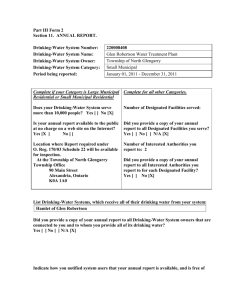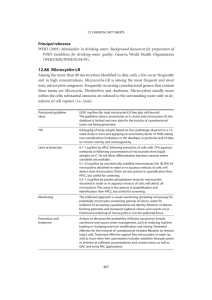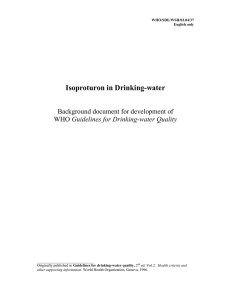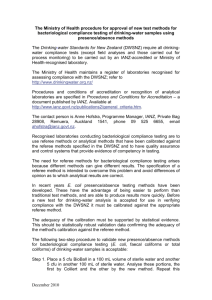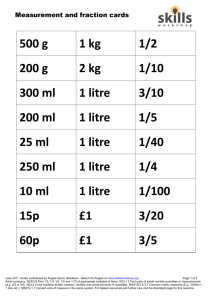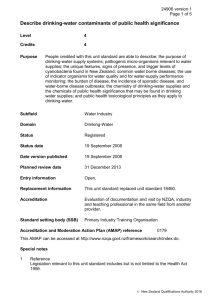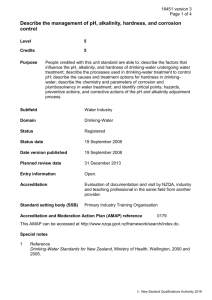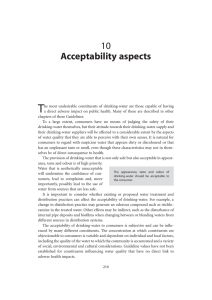12.75 Isoproturon
advertisement
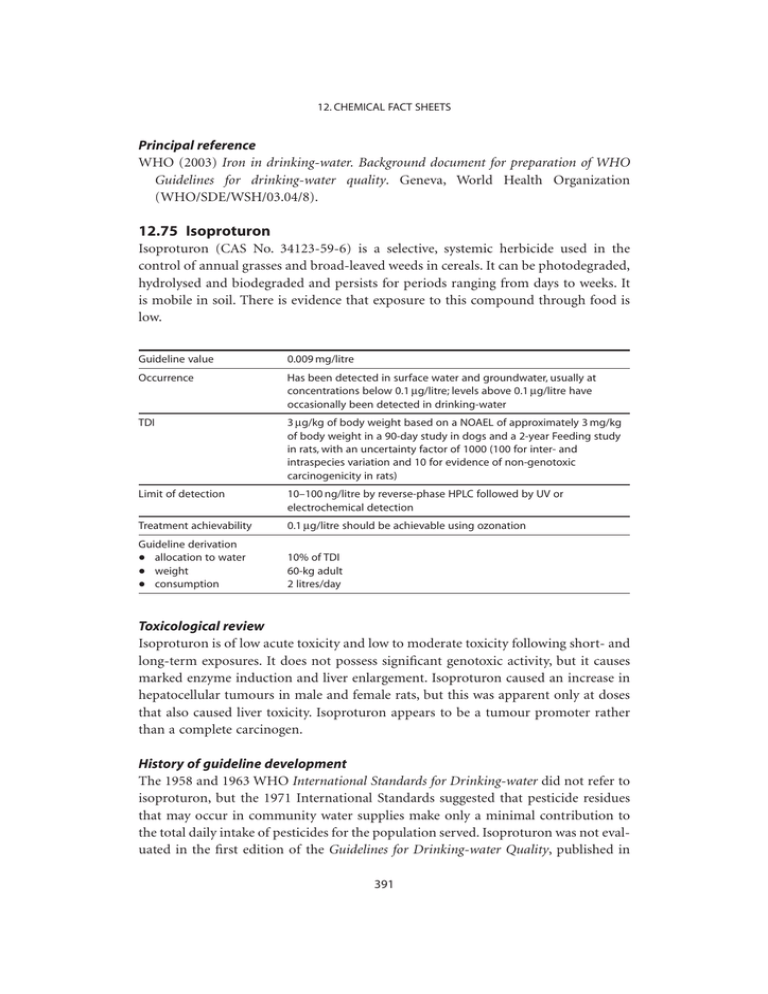
12. CHEMICAL FACT SHEETS Principal reference WHO (2003) Iron in drinking-water. Background document for preparation of WHO Guidelines for drinking-water quality. Geneva, World Health Organization (WHO/SDE/WSH/03.04/8). 12.75 Isoproturon Isoproturon (CAS No. 34123-59-6) is a selective, systemic herbicide used in the control of annual grasses and broad-leaved weeds in cereals. It can be photodegraded, hydrolysed and biodegraded and persists for periods ranging from days to weeks. It is mobile in soil. There is evidence that exposure to this compound through food is low. Guideline value 0.009 mg/litre Occurrence Has been detected in surface water and groundwater, usually at concentrations below 0.1 mg/litre; levels above 0.1 mg/litre have occasionally been detected in drinking-water TDI 3 mg/kg of body weight based on a NOAEL of approximately 3 mg/kg of body weight in a 90-day study in dogs and a 2-year Feeding study in rats, with an uncertainty factor of 1000 (100 for inter- and intraspecies variation and 10 for evidence of non-genotoxic carcinogenicity in rats) Limit of detection 10–100 ng/litre by reverse-phase HPLC followed by UV or electrochemical detection Treatment achievability 0.1 mg/litre should be achievable using ozonation Guideline derivation allocation to water weight consumption 10% of TDI 60-kg adult 2 litres/day • • • Toxicological review Isoproturon is of low acute toxicity and low to moderate toxicity following short- and long-term exposures. It does not possess significant genotoxic activity, but it causes marked enzyme induction and liver enlargement. Isoproturon caused an increase in hepatocellular tumours in male and female rats, but this was apparent only at doses that also caused liver toxicity. Isoproturon appears to be a tumour promoter rather than a complete carcinogen. History of guideline development The 1958 and 1963 WHO International Standards for Drinking-water did not refer to isoproturon, but the 1971 International Standards suggested that pesticide residues that may occur in community water supplies make only a minimal contribution to the total daily intake of pesticides for the population served. Isoproturon was not evaluated in the first edition of the Guidelines for Drinking-water Quality, published in 391 GUIDELINES FOR DRINKING-WATER QUALITY 1984, but the 1993 Guidelines calculated a health-based guideline value of 0.009 mg/litre for isoproturon in drinking-water. Assessment date The risk assessment was originally conducted in 1993. The Final Task Force Meeting in 2003 agreed that this risk assessment be brought forward to this edition of the Guidelines for Drinking-water Quality. Principal reference WHO (2003) Isoproturon in drinking-water. Background document for preparation of WHO Guidelines for drinking-water quality. Geneva, World Health Organization (WHO/SDE/WSH/03.04/37). 12.76 Lead Lead is used principally in the production of lead-acid batteries, solder and alloys. The organolead compounds tetraethyl and tetramethyl lead have also been used extensively as antiknock and lubricating agents in petrol, although their use for these purposes in many countries is being phased out. Owing to the decreasing use of leadcontaining additives in petrol and of lead-containing solder in the food processing industry, concentrations in air and food are declining, and intake from drinking-water constitutes a greater proportion of total intake. Lead is rarely present in tap water as a result of its dissolution from natural sources; rather, its presence is primarily from household plumbing systems containing lead in pipes, solder, fittings or the service connections to homes. The amount of lead dissolved from the plumbing system depends on several factors, including pH, temperature, water hardness and standing time of the water, with soft, acidic water being the most plumbosolvent. Guideline value 0.01 mg/litre Occurrence Concentrations in drinking-water are generally below 5 mg/litre, although much higher concentrations (above 100 mg/litre) have been measured where lead fittings are present. PTWI 25 mg/kg of body weight (equivalent to 3.5 mg/kg of body weight per day) for infants and children on the basis that lead is a cumulative poison and that there should be no accumulation of body burden of lead Limit of detection 1 mg/litre by AAS Treatment achievability Not a raw water contaminant; treatment not applicable Guideline derivation allocation to water weight consumption 50% of PTWI 5-kg infant 0.75 litre/day • • • 392



